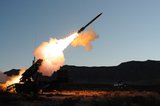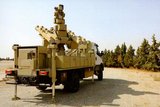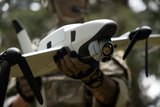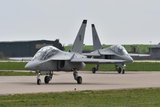Avalon 2025: Australia’s missile and ordnance plans excite companies
Lockheed Martin, Boeing and BAE Systems have been pushing their case forward for GWEO. (Image: BAE Systems)
After decades of major orders and with ongoing procurements, the opportunities for Australian industry are substantially less than when aircraft orders and deliveries flowed while land and naval competitions were being signed.
The Royal Australian Air Force has received several types of aircraft in recent years and the Australian Army has billions-of-dollars of equipment entering service such as AS9 self-propelled howitzers, AS10 support vehicles for AS9, Abrams main battle tanks and Apache AH-64E attack helicopters.
Similarly, the Royal Australian Navy is awaiting its Hunter-class destroyers and while the AUKUS nuclear submarine requirement is potentially a long-term opportunity there is little
Already have an account? Log in
Want to keep reading this article?
More from Air Warfare
-
![Bell advances to next stage of US Army’s aviator training programme competition]()
Bell advances to next stage of US Army’s aviator training programme competition
The US Army plans to award a contract through its Flight School Next competition to replace its UH-72A Lakota by late 2026.
-
![Denmark to bolster maritime defences as P-8A FMS deal approved by US]()
Denmark to bolster maritime defences as P-8A FMS deal approved by US
The NATO country continues to focus on building up its maritime surveillance and enforcement capabilities as part of a major investment in its Arctic defences.
-
![December Drone Digest: Germany, Australia and US champion indigenous UAV production]()
December Drone Digest: Germany, Australia and US champion indigenous UAV production
One of the key trends seen in December has been the rise in indigenous investment within the UAV market, particularly across certain countries, with Germany, Australia and the US focusing on their commitments to sovereign development.
-
![What might next-generation military aircrew training look like?]()
What might next-generation military aircrew training look like?
Changing roles for combat aircraft fleets, the rise of simulation and LVC technologies, and the increasing cost of flight hours could all be leading to a paradigm shift in military pilot training.






















